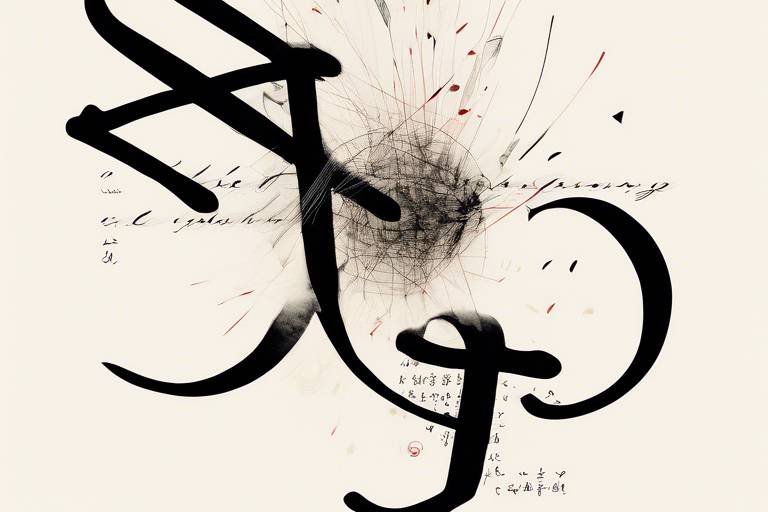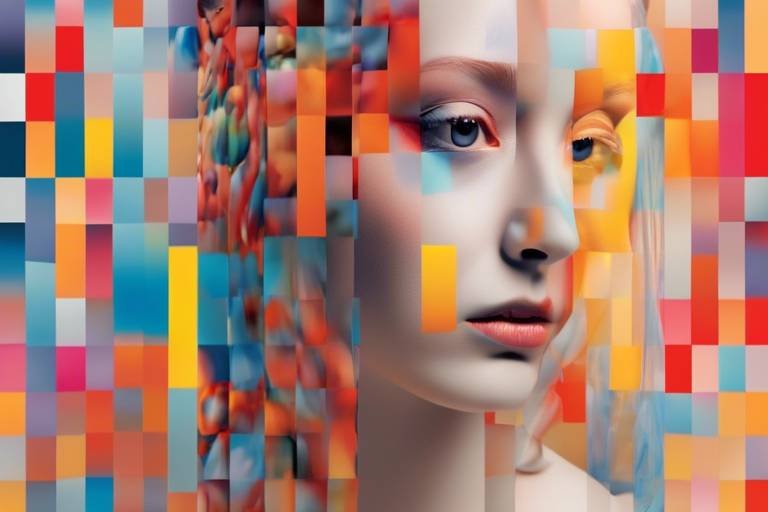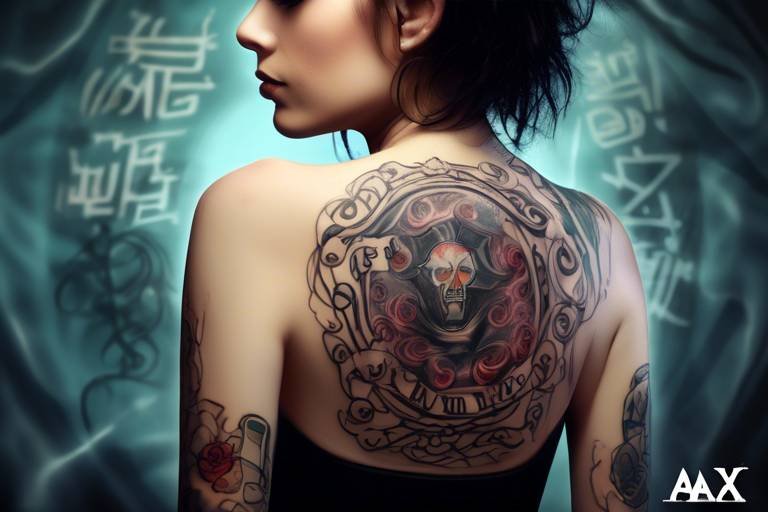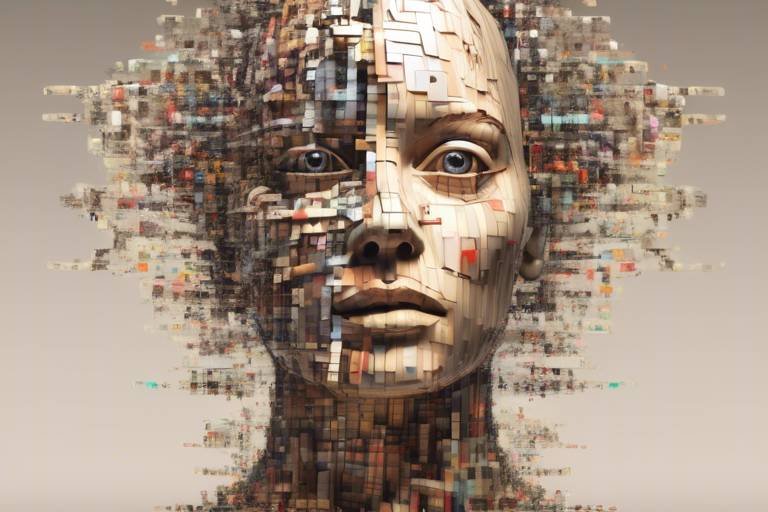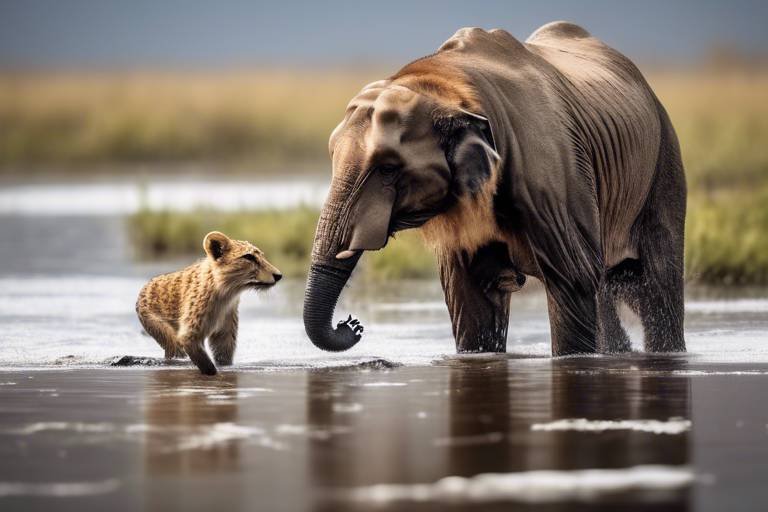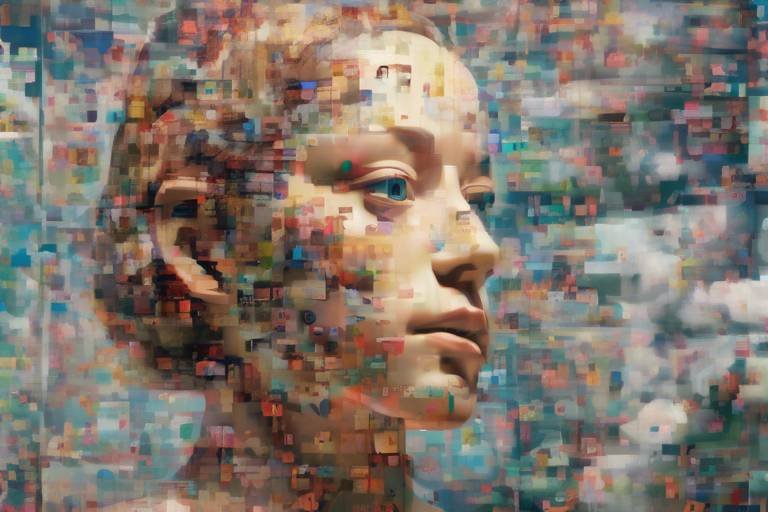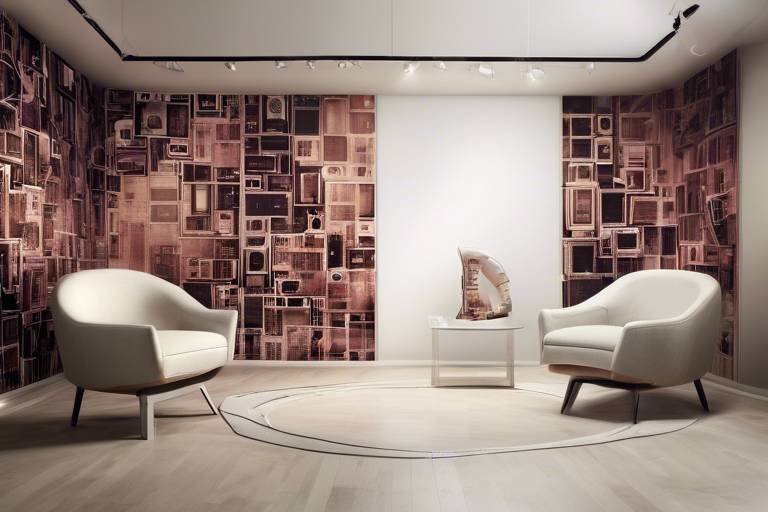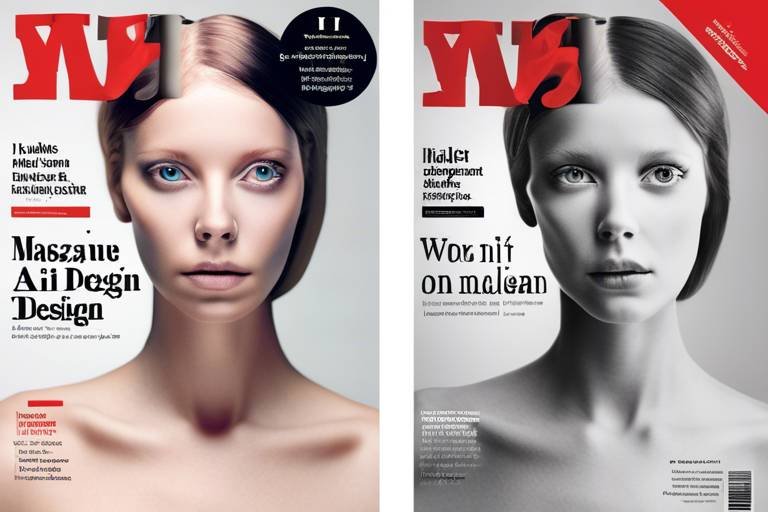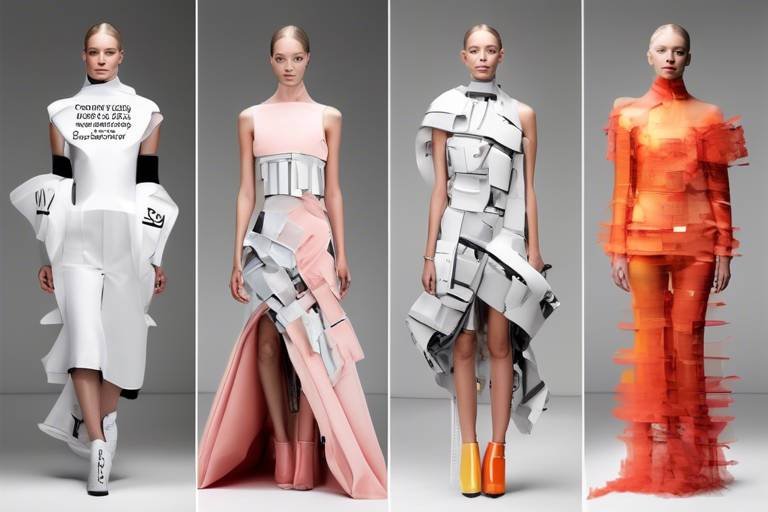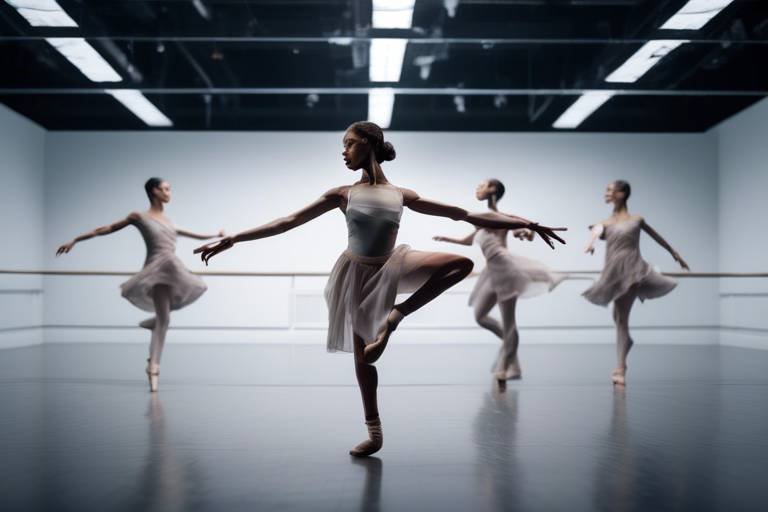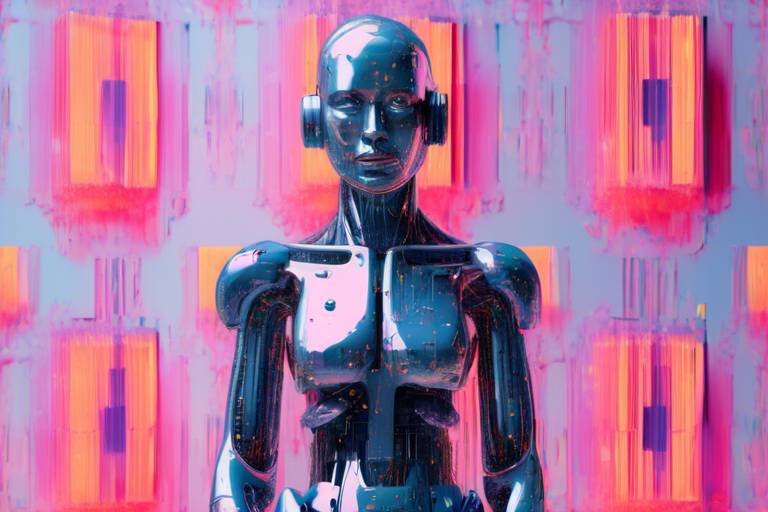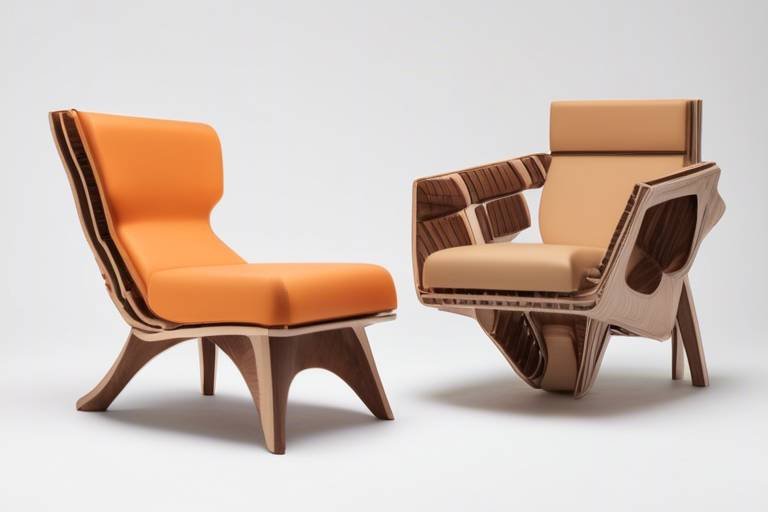The Beautiful Intersection of AI and Calligraphy
In a world where technology often seems to overshadow traditional craftsmanship, the fusion of artificial intelligence (AI) and calligraphy stands out as a captivating paradox. Imagine the delicate strokes of a brush, each movement steeped in history and artistry, now enhanced by the precision and efficiency of AI. This intersection is not just a trend; it’s a revolution that breathes new life into an age-old art form. As we delve into this fascinating blend, we’ll uncover how technology not only enhances artistic expression but also preserves the intricate beauty of calligraphy.
Calligraphy, often regarded as a timeless art, has evolved through centuries, adapting to cultural shifts and technological advancements. However, the recent infusion of AI into this field has sparked a dialogue about the future of art itself. Will machines replace the human touch, or will they serve as tools that amplify our creative potential? This article aims to explore these questions, highlighting the transformative impact of AI on calligraphy while honoring the traditional techniques that have defined this craft for generations.
At its core, calligraphy is more than just writing; it’s an expression of emotion, culture, and identity. Each letter and flourish tells a story, a narrative that reflects the artist's soul. When we introduce AI into this mix, we open the door to a realm of possibilities. Think of AI as a collaborative partner, one that can analyze countless styles, suggest new designs, and even mimic the unique handwriting of different artists. This partnership doesn't diminish the artist's role; instead, it enhances their capabilities, allowing for a richer exploration of creativity.
As we journey through this exploration of AI and calligraphy, we will examine how generative design, customization, and collaborative art creation are reshaping the landscape of this beloved art form. We’ll also take a moment to reflect on the importance of preserving traditional techniques amidst this technological evolution. So, whether you’re a seasoned calligrapher or a curious newcomer, prepare to be inspired by the beautiful intersection of art and technology!
- What is the role of AI in calligraphy? AI serves as a tool to enhance creativity, allowing artists to explore new styles and techniques while maintaining the essence of traditional calligraphy.
- Can AI-generated calligraphy be considered art? Yes, AI-generated calligraphy can be seen as a collaboration between technology and human creativity, resulting in unique artistic expressions.
- How can traditional calligraphy techniques be preserved with AI? AI can assist in documenting and analyzing traditional techniques, providing artists with insights that help maintain the integrity of classic styles.

The Evolution of Calligraphy
Calligraphy, often referred to as the art of beautiful handwriting, has a rich history that stretches back thousands of years. Its evolution is not just a tale of changing styles but a reflection of the cultures and societies that embraced this art form. From the intricate strokes of ancient scripts to the modern interpretations we see today, calligraphy has continuously adapted while retaining its essence.
The journey of calligraphy began in ancient civilizations, where writing systems were developed to communicate ideas and record history. The earliest known forms of calligraphy can be traced back to Mesopotamia, around 3200 BCE, where cuneiform symbols were inscribed on clay tablets. This was not just a method of communication; it was an art form that required precision and skill. Each stroke had to be deliberate, reflecting the importance of the message being conveyed.
As we move through history, we see the rise of different styles influenced by various cultures. The Chinese developed their own unique calligraphic techniques, emphasizing brush strokes and fluidity, which became a symbol of scholarly achievement. Similarly, the Arabic script emerged, known for its flowing curves and intricate designs. The beauty of Arabic calligraphy lies not only in its aesthetics but also in its spiritual significance, often used to transcribe the Quran and other religious texts.
During the Renaissance in Europe, calligraphy experienced a revival as the invention of the printing press transformed the way people interacted with text. Despite the rise of printed materials, the demand for handcrafted calligraphy remained strong, especially for formal documents and invitations. This period saw the emergence of styles such as Italic and Gothic, each with its own unique flair that captured the essence of the time.
In the 20th century, calligraphy took on new forms as artists began to experiment with the medium. The Modern Calligraphy movement emerged, blending traditional techniques with contemporary styles. Artists like Sheila Waters and Edward Johnston played pivotal roles in this transformation, pushing the boundaries of what calligraphy could be. Today, calligraphy is not just confined to paper; it has expanded into digital realms, allowing for innovative expressions that were once unimaginable.
Throughout its evolution, calligraphy has maintained a deep connection to the cultures that birthed it. It serves as a bridge between the past and the present, allowing us to appreciate the artistry and skill of those who came before us. As we delve deeper into the intersection of calligraphy and artificial intelligence, it’s essential to recognize the historical significance of this art form, as it continues to inspire and evolve in the modern age.
- What is calligraphy? Calligraphy is the art of beautiful handwriting, characterized by the design and execution of lettering with a broad-tipped instrument, brush, or other writing instrument.
- When did calligraphy originate? Calligraphy has origins dating back to ancient civilizations, with the earliest known forms emerging around 3200 BCE in Mesopotamia.
- How has technology influenced calligraphy? Technology has introduced new tools and techniques, including digital calligraphy, which allows artists to explore innovative styles and methods of expression.
- Is calligraphy still relevant today? Yes, calligraphy remains a popular art form, with modern applications in design, branding, and personal expression.

AI's Role in Modern Art
In the rapidly evolving world of art, the infusion of artificial intelligence has sparked a revolution that is reshaping how we create, perceive, and interact with artistic expressions. The integration of AI into modern art isn't merely a trend; it represents a fundamental shift in the creative landscape. Imagine a world where artists can collaborate with algorithms, where creativity is not just a human endeavor but a partnership between man and machine. This collaboration opens doors to new possibilities, allowing artists to push the boundaries of their imagination.
AI tools are becoming essential for artists, offering innovative techniques that enhance creativity and streamline artistic processes. For instance, algorithms can analyze vast datasets of artistic styles, enabling artists to draw inspiration from a multitude of sources that they might not have encountered otherwise. This fusion of technology and creativity can lead to the emergence of entirely new art forms, challenging conventional notions of what art can be. Think of it as having a creative assistant that never tires, always ready to offer fresh ideas and perspectives.
One of the most exciting aspects of AI in modern art is its ability to generate unique pieces through generative design. This technique employs algorithms that mimic artistic principles, allowing for the creation of distinctive calligraphic styles that defy traditional aesthetics. For example, an artist might input certain parameters—like color schemes, shapes, or themes—and the AI can produce a variety of designs that the artist can then refine or adapt. This process not only saves time but also encourages artists to explore avenues they might not have considered before.
Moreover, AI-driven customization is revolutionizing how art is personalized. Artists can now create tailored works that resonate with individual preferences. Imagine commissioning a piece of calligraphy that reflects not just your name but also your personality, interests, and style. AI can analyze your preferences and suggest designs that align perfectly with your vision. This level of customization was once a labor-intensive task, but with AI, it becomes a seamless experience.
Collaboration between AI and human artists is not just about efficiency; it’s about co-creating stunning pieces that blend the best of both worlds. Artists can leverage AI to enhance their work while maintaining their unique voice and style. This partnership can lead to unexpected outcomes, sparking new ideas and inspiring creativity in ways that were previously unimaginable. The synergy between human intuition and AI's analytical prowess creates a dynamic environment where artistic expression flourishes.
However, as we embrace the benefits of AI in art, it is crucial to remember that technology should not overshadow the human element of creativity. The essence of art lies in its ability to convey emotions, tell stories, and connect with audiences on a profound level. While AI can assist in the creation process, it is the artist's vision and emotional depth that ultimately breathe life into the artwork. Balancing the use of technology with the preservation of traditional artistic values is essential for maintaining the integrity of modern art.
In conclusion, AI's role in modern art is transformative and multifaceted, offering artists new tools to enhance their creativity while preserving the core values of artistic expression. The future of art lies in the harmonious coexistence of technology and tradition, where artists can explore new horizons without losing sight of the rich history that shapes their craft.
- How does AI enhance creativity in art? AI offers tools and algorithms that analyze vast datasets, providing artists with new ideas and styles to explore, thus enhancing their creative process.
- Can AI create art independently? While AI can generate art based on algorithms, the emotional depth and personal touch of art still rely on human artists to bring it to life.
- What are the challenges of integrating AI in art? Some challenges include concerns about authenticity, the potential loss of traditional skills, and finding a balance between technology and artistic integrity.

Generative Design in Calligraphy
Generative design is a fascinating intersection of technology and creativity, and it’s making waves in the world of calligraphy. Imagine a canvas where traditional strokes meet digital algorithms, creating a symphony of letters that dance across the page. This innovative approach allows artists to explore new realms of calligraphic expression that were once unimaginable. By utilizing algorithms, generative design can produce unique calligraphic styles that challenge conventional aesthetics and push the boundaries of what we consider art.
At its core, generative design harnesses the power of artificial intelligence to create art that is not only visually stunning but also deeply intricate. Artists can input specific parameters, and the AI takes over, generating countless variations based on those guidelines. This is akin to planting a seed in fertile soil; the artist provides the initial idea, and the AI nurtures it into a flourishing garden of possibilities. The result? A plethora of designs that can range from the elegantly simple to the wildly complex, offering a fresh take on the age-old practice of calligraphy.
One of the most exciting aspects of generative design in calligraphy is its ability to blend styles and techniques from different cultures and eras. For instance, an artist might combine elements of traditional Arabic calligraphy with modern typography, creating a hybrid style that pays homage to both. This fusion not only enriches the art form but also fosters a deeper appreciation for the diverse influences that shape calligraphy across the globe.
Moreover, generative design opens the door to collaborative creativity. Artists can work alongside AI, using it as a tool to enhance their own skills rather than replace them. This partnership allows for a dialogue between human intuition and machine precision, resulting in pieces that are both heartfelt and meticulously crafted. Imagine an artist sketching out a rough draft, then feeding it into an AI program that refines and elaborates on the initial idea, producing a final piece that captures the essence of the artist's vision while adding a layer of complexity that only technology can provide.
However, while generative design offers exciting opportunities, it also raises important questions about authorship and originality. Who is the true creator of a piece that is born from a collaboration between human and machine? Is it the artist who provided the initial concept, or is it the AI that executed the design? These questions are at the forefront of discussions in the art community as we navigate this new landscape.
In conclusion, generative design in calligraphy represents a thrilling evolution in the art form. It encourages artists to embrace technology while still honoring the rich traditions of calligraphy. As we continue to explore this beautiful intersection of AI and art, we can expect to see even more innovative and breathtaking creations that challenge our understanding of what calligraphy can be.
- What is generative design in calligraphy? Generative design in calligraphy refers to the use of algorithms and AI to create unique calligraphic styles and designs that blend traditional techniques with modern technology.
- How does AI enhance the calligraphy process? AI enhances the calligraphy process by generating numerous design variations based on initial parameters set by the artist, allowing for greater creativity and exploration.
- Can AI replace traditional calligraphy? While AI can produce stunning designs, it is meant to complement traditional calligraphy rather than replace it. The human touch remains essential in creating meaningful art.
- What are the benefits of using generative design? Benefits include increased creativity, the ability to experiment with different styles, and the potential for collaboration between artists and technology.

AI-Driven Customization
Imagine a world where your artistic vision can be brought to life with just a few clicks. is transforming the landscape of calligraphy by allowing artists to create personalized styles that reflect individual preferences in ways that were once unimaginable. In the past, customizing a calligraphic piece often required painstaking hours of practice and a deep understanding of various techniques. Now, with the advent of artificial intelligence, this process has become not only faster but also more intuitive.
At the heart of this transformation is the ability of AI to analyze vast amounts of data, learning from the styles and preferences of countless artists. By utilizing machine learning algorithms, AI can suggest unique calligraphic variations based on a user's input. For instance, if an artist prefers a certain flourish or stroke style, the AI can generate multiple iterations, each with subtle differences, providing a plethora of options to choose from. This not only saves time but also expands the creative possibilities for artists.
Furthermore, AI-driven tools can adapt to the artist's evolving style. As the artist continues to create and refine their work, the AI learns from these changes, offering increasingly tailored suggestions. This dynamic relationship between the artist and technology fosters a collaborative environment where creativity can flourish. It’s akin to having a personal assistant who knows your preferences inside and out, ready to help you explore new avenues of expression.
Additionally, the accessibility of these AI tools means that even those who may not have traditional calligraphy training can engage with this art form. They can easily customize their pieces to suit their tastes, making calligraphy more inclusive than ever. Imagine a wedding invitation beautifully crafted with a unique style that reflects the couple’s personality—achievable with just a few clicks!
However, it's important to note that while AI can significantly enhance customization, it should not replace the artistry involved in traditional calligraphy. The human touch—the nuances of pressure, angle, and flow that come from years of practice—remains irreplaceable. Instead, AI serves as a tool that complements the artist's skills, enabling them to focus on the more expressive aspects of their work while the technology handles the repetitive tasks.
In conclusion, is not merely a trend; it’s a revolutionary step forward in the world of calligraphy. As artists embrace these technologies, they unlock new realms of creativity, allowing for a richer and more personalized artistic expression. With the right balance between technology and traditional skills, the future of calligraphy looks incredibly bright.
- What is AI-driven customization in calligraphy?
AI-driven customization refers to the use of artificial intelligence tools to create personalized calligraphic styles based on individual preferences and input.
- How does AI enhance the creative process for artists?
AI enhances the creative process by analyzing artistic styles and suggesting unique variations, allowing artists to explore new designs quickly and efficiently.
- Can AI replace traditional calligraphy techniques?
No, AI is meant to complement traditional techniques, providing tools that enhance creativity while preserving the artistry that comes from human skill.
- Is AI-driven customization accessible to beginners?
Yes, AI tools make calligraphy more accessible to beginners, allowing them to create customized pieces without extensive training.

Collaborative Art Creation
In the vibrant world of art, collaboration has always been a catalyst for innovation and creativity. Now, with the rise of artificial intelligence, we find ourselves at a fascinating crossroads where human artistry meets machine learning. Imagine a scenario where an artist and an AI work hand in hand, each contributing their unique strengths to create something truly extraordinary. This partnership can lead to stunning calligraphic pieces that push the boundaries of traditional art forms.
AI tools can analyze vast amounts of data, learning from various styles and techniques throughout history. This ability allows them to suggest new forms and styles to artists, acting as a digital muse. For instance, an artist might input a few strokes or a specific style into an AI program, which then generates multiple variations based on those initial inputs. This process not only enhances the artist's creative process but also sparks inspiration in ways that might not have been possible without AI.
One of the most exciting aspects of this collaboration is the ability to experiment without fear of failure. Artists can play around with different styles and techniques, knowing that AI can help refine their ideas. This opens up a world of possibilities, allowing for greater exploration of artistic expression. For example, an artist might choose to blend traditional calligraphy with modern graphic design elements, resulting in a hybrid style that is both fresh and rooted in historical significance.
Moreover, AI can assist in the technical aspects of calligraphy, such as ensuring that strokes are consistent and precise. This helps artists focus on the creative side of their work without getting bogged down by the minutiae of technique. The result? A seamless fusion of **tradition** and **innovation** that can lead to breathtaking works of art.
However, this collaboration is not just about enhancing creativity; it's also about redefining the role of the artist in the creative process. As AI continues to evolve, artists may find themselves taking on new roles, acting as curators of their own work rather than mere creators. This shift challenges the conventional notions of authorship and originality, making us question what it truly means to be an artist in the age of technology.
In summary, the collaboration between AI and human artists is a thrilling development in the world of calligraphy. It encourages experimentation, enhances creativity, and opens up new avenues for artistic expression. As we continue to explore this intersection, we can only imagine the breathtaking works that will emerge from this partnership.
- What is collaborative art creation? Collaborative art creation refers to the process where artists work alongside AI or other artists to produce innovative artworks, combining different styles and techniques.
- How does AI enhance the creative process? AI can analyze data from various art forms, suggest new styles, and assist in technical aspects, allowing artists to focus on creativity and exploration.
- Can AI replace traditional artists? While AI can enhance artistic expression, it cannot replace the unique human touch, emotional depth, and creativity that traditional artists bring to their work.
- What are the benefits of using AI in calligraphy? AI can help streamline the creative process, offer new design suggestions, and assist with technical precision, leading to innovative calligraphic styles.

Preserving Traditional Techniques
In a world where technology is constantly evolving, the preservation of traditional calligraphy techniques is not just a nostalgic endeavor; it is a vital part of our cultural heritage. Calligraphy, with its intricate strokes and elegant forms, has been a form of artistic expression for centuries. As we embrace the advancements brought by artificial intelligence, it becomes crucial to ensure that the skills, methods, and philosophies that underpin this ancient art form are not lost in the process.
One of the most significant ways AI can aid in preserving traditional techniques is through education and accessibility. Imagine a budding artist in a remote area who has limited access to experienced calligraphers. With the help of AI-driven tutorials and interactive learning platforms, these individuals can gain insights into the nuances of traditional styles such as Gothic, Italic, or Chinese calligraphy. By integrating AI into teaching methods, we can create a bridge that connects the old with the new.
Moreover, AI can serve as a tool for documentation and analysis. By analyzing various calligraphic styles, AI can help catalog the subtle differences in strokes and techniques that define each tradition. This data can be invaluable for researchers and artists alike, allowing them to study and replicate these styles with greater fidelity. For example, AI algorithms can analyze the pressure and angle of strokes in traditional scripts, offering insights that can enhance both teaching and practice.
However, it is important to recognize that while technology can assist in preserving these techniques, it cannot replace the human touch. The emotional connection and the personal journey of mastering calligraphy are irreplaceable. Therefore, artists must strive to find a balance between using AI as a supportive tool and maintaining the hands-on practice that is essential to traditional calligraphy. This balance allows for a richer artistic experience, where the artist's unique voice can shine through even when aided by technology.
Furthermore, the fusion of AI and traditional techniques can lead to exciting new forms of expression. For instance, artists can experiment with digital tools that mimic traditional brushes and inks, allowing them to create innovative pieces that pay homage to the past while pushing the boundaries of modern art. This evolution can breathe new life into ancient styles, ensuring they remain relevant and appreciated by future generations.
In conclusion, preserving traditional calligraphy techniques in the age of AI is not merely about resisting change; it's about embracing a new paradigm where technology and tradition coexist. By utilizing AI for education, documentation, and creative exploration, we can ensure that the beauty and intricacy of calligraphy continue to flourish. As we move forward, let us remember that the heart of calligraphy lies not just in the strokes of the pen but in the stories and cultures that each piece embodies.
- What is the significance of traditional calligraphy? Traditional calligraphy is significant as it reflects cultural history and artistic expression, showcasing the beauty of written language.
- Can AI replace traditional calligraphy techniques? While AI can enhance and support the learning of traditional techniques, it cannot replace the human touch and emotional connection that artists bring to their work.
- How can AI help in learning calligraphy? AI can provide interactive tutorials, analyze techniques, and offer personalized feedback, making learning more accessible and effective.
- Is it possible to combine AI with traditional calligraphy? Yes, combining AI with traditional calligraphy can lead to innovative artistic expressions while preserving the essence of the craft.

Challenges and Criticisms
As the integration of artificial intelligence into the world of calligraphy continues to grow, it brings with it a plethora of that can't be ignored. While many artists embrace the potential of AI to enhance their craft, others express concern over the implications of this technological shift. One of the most significant issues revolves around the question of authenticity. As AI-generated art becomes more commonplace, it raises a fundamental question: can a piece created by an algorithm truly embody the spirit of human expression? This debate often leaves artists and critics alike pondering whether art generated by machines can ever resonate with the same emotional depth as that created by human hands.
Moreover, there's a palpable fear that reliance on AI tools may lead to a decline in traditional calligraphy skills. Imagine a world where the delicate strokes of a brush are replaced by the click of a button. This transition could result in a generation of artists who, while tech-savvy, may lack the foundational skills that have been honed over centuries. The essence of calligraphy lies not just in the final product but in the process—the hours spent mastering each stroke, the feel of the ink, and the connection to history. The risk here is that as we embrace the future, we might inadvertently lose touch with the past.
Another area of concern is the potential for homogenization of artistic styles. With AI algorithms often drawing from vast datasets of existing works, there's a fear that the unique flair of individual artists could be diluted. If everyone has access to the same tools and algorithms, will we see a surge in similar styles, leading to a lack of diversity in artistic expression? This could create a landscape where the richness of calligraphy is overshadowed by a sea of uniformity, making it harder for individual voices to stand out.
Furthermore, the ethical implications of using AI in art can't be overlooked. Questions arise about ownership and copyright when AI creates a piece. Who deserves credit for an artwork generated by an algorithm? The programmer who designed the AI? The artist who input the parameters? Or is it the AI itself? These questions complicate the relationship between technology and creativity, leading to potential legal and moral dilemmas.
In summary, while the intersection of AI and calligraphy offers exciting possibilities, it also presents significant challenges that the artistic community must navigate. The key lies in finding a balance between embracing innovation and preserving the integrity of traditional art forms. As we move forward, it's essential for artists to engage in conversations about these issues, ensuring that the future of calligraphy remains vibrant and true to its roots.
- What are the main concerns regarding AI in calligraphy?
The primary concerns include authenticity, the decline of traditional skills, homogenization of styles, and ethical implications regarding ownership. - Can AI-generated art be considered authentic?
This is a debated topic; many believe that true authenticity comes from human experience and emotion, which AI lacks. - How can artists maintain traditional skills while using AI?
Artists can balance technology and tradition by continuing to practice traditional techniques alongside their use of AI tools.

The Debate on Authenticity
The intersection of artificial intelligence and traditional calligraphy has sparked a vibrant debate about authenticity in artistic expression. As AI-generated art becomes increasingly prevalent, many artists and critics are left pondering: what does it mean to be an authentic creator in a world where algorithms can mimic human creativity? This question is not merely academic; it strikes at the heart of what we value in art and craftsmanship. While some hail AI as a tool for innovation, others view it as a threat to the very essence of artistic integrity.
At its core, authenticity in art is often tied to the artist's unique voice, perspective, and emotional depth. Traditional calligraphy, with its rich history and cultural significance, embodies these qualities. Artists pour their souls into every stroke, drawing from centuries of practice and tradition. However, when AI steps into the picture, generating intricate calligraphic designs at the click of a button, the line between genuine artistry and mechanical reproduction begins to blur. Can a piece created by an algorithm truly capture the same emotional resonance as one crafted by a human hand? This question leads us to explore the implications of AI in the realm of calligraphy.
To understand this debate fully, we must consider several key points:
- Human Touch vs. Machine Precision: Traditional calligraphy relies heavily on the artist's hand movements, which convey emotion and intent. AI, while capable of producing visually stunning designs, lacks the inherent emotional connection that a human artist brings to their work.
- Originality vs. Replication: AI systems learn from existing works and can generate new pieces based on patterns and styles they've absorbed. This raises questions about originality—if an AI creates a calligraphic piece that closely resembles a famous artist's work, can it truly be considered original?
- Accessibility vs. Exclusivity: On one hand, AI democratizes art by making it more accessible to those who may not have traditional skills. On the other hand, does this accessibility dilute the exclusivity and value of handcrafted pieces?
Critics argue that relying on AI for calligraphy could lead to a homogenization of styles, where unique cultural expressions are lost in the sea of algorithm-generated art. However, proponents of AI argue that it can serve as a collaborative tool, enhancing rather than replacing traditional methods. By using AI, artists can experiment with new styles, push boundaries, and create hybrid forms that honor both tradition and innovation.
Ultimately, the debate on authenticity in AI-generated calligraphy is a reflection of broader questions about technology's role in our lives. As we navigate this evolving landscape, it becomes crucial for artists to find their own balance between embracing new tools and preserving the integrity of their craft. The challenge lies in ensuring that the human element—the passion, the story, and the tradition—remains at the forefront of artistic expression, even as we explore the fascinating possibilities that AI offers.
- What is AI-generated calligraphy? AI-generated calligraphy refers to designs created using artificial intelligence algorithms that can mimic traditional calligraphic styles.
- Can AI replace traditional calligraphy? While AI can produce calligraphic designs, it lacks the emotional depth and personal touch of human artists, making it unlikely to fully replace traditional calligraphy.
- How can artists use AI in their work? Artists can use AI as a collaborative tool to enhance their creativity, experiment with new styles, and streamline the artistic process.
- What are the concerns regarding authenticity in AI art? Concerns include the potential loss of unique cultural expressions, questions about originality, and the emotional disconnect in machine-generated art.

Balancing Technology and Tradition
In the ever-evolving landscape of art, finding a balance between technology and tradition is akin to walking a tightrope. On one side, we have the rich heritage of calligraphy, a craft steeped in history and cultural significance, where each stroke of the brush tells a story. On the other side, we are greeted by the rapid advancements of artificial intelligence, promising to revolutionize how we create and appreciate art. So, how do artists navigate this delicate balance? It's a question that invites exploration and dialogue.
To begin with, many artists recognize that technology can serve as a tool rather than a replacement for traditional methods. Think of it like a chef using a modern oven while still adhering to age-old recipes. The oven enhances efficiency, but the essence of the dish remains rooted in tradition. Similarly, AI can help calligraphers streamline their processes, allowing them to focus on the artistry rather than the mundane aspects of creation. For instance, AI tools can assist with layout design or color selection, freeing artists to concentrate on their unique styles and expressions.
However, the challenge lies in ensuring that technology does not overshadow the intricacies of traditional calligraphy. The tactile experience of ink on paper, the feel of the brush in hand, and the meditative quality of creating each letter are irreplaceable. Artists often find themselves asking, "How can I use AI to enhance my work without losing the personal touch that makes it special?" This introspection leads to a harmonious blend where artists can create pieces that not only reflect their individual styles but also incorporate innovative elements brought forth by AI.
Moreover, artists are beginning to embrace the idea of collaboration with AI. Instead of viewing AI as a competitor, they see it as a partner in the creative process. This collaborative spirit can lead to stunning results. For instance, an artist might start a piece using traditional methods and then use AI to generate variations, allowing them to explore new directions they might not have considered otherwise. This synergy can yield a fresh perspective on calligraphy, merging the old with the new in a way that captivates audiences.
Despite these advantages, it’s essential to maintain a dialogue about the implications of technology in art. Artists must continually ask themselves: "Are we preserving the essence of calligraphy, or are we allowing technology to dilute its beauty?" This self-reflection is crucial in ensuring that the integrity of the craft is upheld while embracing the benefits of modern tools.
Ultimately, the balance between technology and tradition in calligraphy is not a destination but a journey. Artists can choose to incorporate AI in ways that respect and honor the age-old techniques that have shaped the art form. By doing so, they create a dynamic landscape where both tradition and innovation coexist, enriching the world of calligraphy for future generations.
- What is the role of AI in modern calligraphy? AI serves as a tool to enhance creativity, streamline processes, and offer new styles, while still respecting traditional techniques.
- Can AI replace traditional calligraphy? No, AI cannot replace the personal touch and skill involved in traditional calligraphy, but it can complement and enhance the artistic process.
- How can artists maintain their unique style while using AI? Artists can use AI as a collaborative tool, allowing them to explore new ideas without losing their individual artistic voice.
- Is there a risk of losing traditional skills due to AI? While there is a concern, artists can actively choose to preserve traditional techniques while integrating AI into their work.
Frequently Asked Questions
- What is the relationship between AI and traditional calligraphy?
AI and traditional calligraphy may seem worlds apart, but they actually complement each other beautifully. AI tools can enhance the creative process, allowing artists to explore new styles and techniques while still honoring the rich history of calligraphy. It's like having a digital brush that helps you paint your ideas more vividly!
- How has calligraphy evolved over the years?
Calligraphy has a rich history that dates back centuries, evolving through different cultures and artistic movements. From the elegant scripts of ancient civilizations to modern interpretations, each era has contributed to the beauty of this art form. Think of it as a living tapestry, woven with the threads of time and creativity.
- Can AI create unique calligraphy styles?
Absolutely! AI can generate unique calligraphic styles by using algorithms that blend artistic principles with data. This generative design approach allows for innovative and unexpected results, pushing the boundaries of traditional aesthetics. It's like having a creative partner that surprises you with fresh ideas!
- Is it possible to customize calligraphy using AI?
Yes, AI technology allows for incredible customization in calligraphy. Artists can create personalized styles tailored to individual preferences, making the art form more accessible and relatable. Imagine being able to order a piece of art that reflects your personality—how cool is that?
- What are the main challenges of integrating AI into calligraphy?
While AI brings exciting possibilities, there are challenges to consider. Concerns about authenticity, creativity, and the potential loss of traditional skills are prevalent. It's important for artists to navigate these issues carefully, ensuring that technology enhances rather than overshadows the art form.
- How can artists balance technology and tradition in their work?
Finding the right balance between technology and tradition is crucial for artists. They can embrace AI tools while still honoring the techniques that have been passed down through generations. It's like dancing between two worlds—each step should celebrate the past while inviting the future!
- What does authenticity mean in the context of AI-generated art?
Authenticity in AI-generated art raises interesting questions. As technology continues to evolve, the definition of what is "real" or "genuine" in art may shift. It's essential to consider how AI influences the creative process and whether it detracts from the artist's personal touch.

